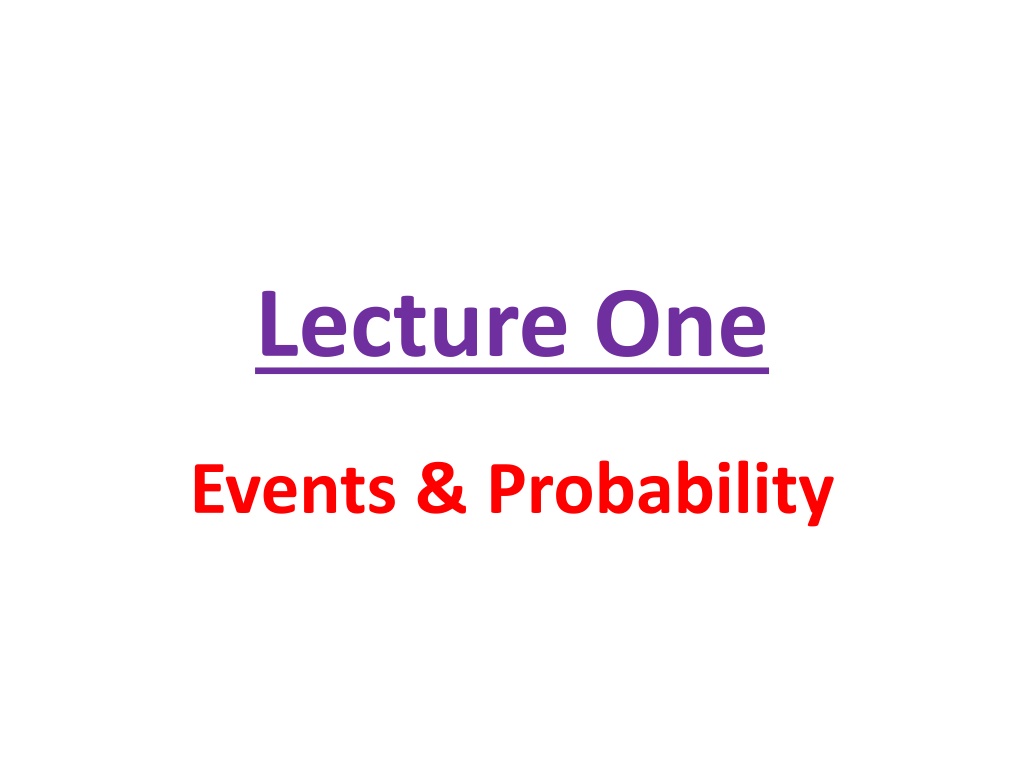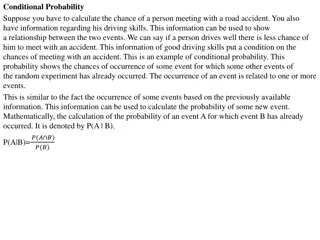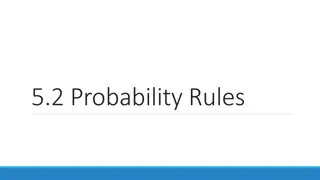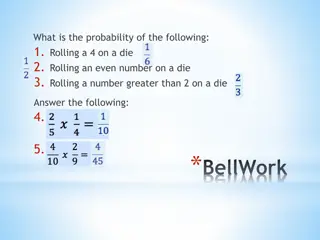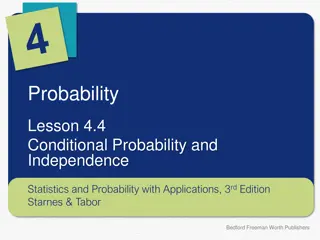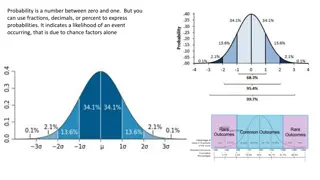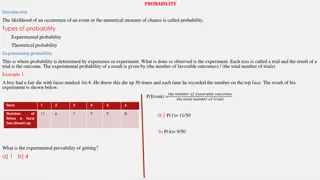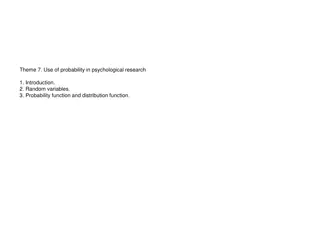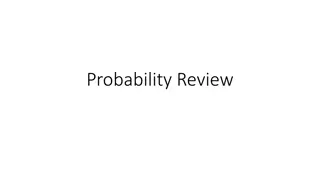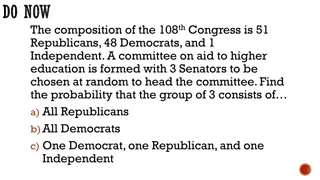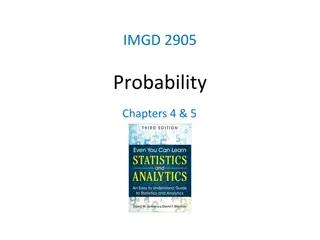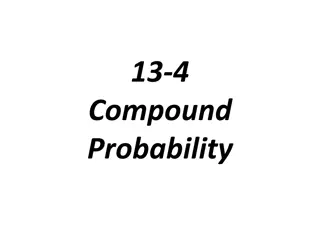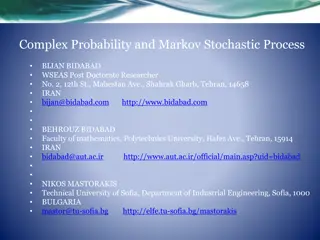Events and Probability Examples
The content discusses various examples related to events and probability, such as throwing dice, selecting balls from urns, and analyzing witness testimony in a trial. It covers scenarios involving conditional probability, conflicting testimonies, and calculations of event probabilities. Detailed solutions and explanations are provided for each example, offering a practical understanding of how to approach such problems in probability theory.
Download Presentation

Please find below an Image/Link to download the presentation.
The content on the website is provided AS IS for your information and personal use only. It may not be sold, licensed, or shared on other websites without obtaining consent from the author.If you encounter any issues during the download, it is possible that the publisher has removed the file from their server.
You are allowed to download the files provided on this website for personal or commercial use, subject to the condition that they are used lawfully. All files are the property of their respective owners.
The content on the website is provided AS IS for your information and personal use only. It may not be sold, licensed, or shared on other websites without obtaining consent from the author.
E N D
Presentation Transcript
Lecture One Events & Probability
Example . Two dice are thrown once. Let A , and B be two events defined by: A = the first die shows the number 1. B = the sum of two numbers appearing is less than 6. Find : P(A) , P(B) , P(A B) , P(A BC) , P(A B) Solution: A= {(1,1), (1,2), (1,3), (1,4), (1,5), (1,6)} A B= {(1,1), (1,2), (1,3), (1,4)} P(A BC) = P(A) + P(BC) - P(A BC) P(BC) = 1- P(B) P(A BC) = P(A) - P(A B)
Conditional Probability Example . There three urns A, B & C. Urn A contains six balls {three red, two black, one white}. Urn B contains four balls {one red, one black, two white}. Urn C contains twelve balls {three red, five black, four white}. We select one ball from these urns "randomly", and then select two balls after that we notice one of them is white and the other is red. What is the probability these two balls were selected from urn A? Solution: Under the principle of "equally likely", then: Pr(A) = Pr(B) = Pr(C) = 1/3
E = Two balls are selected regardless the urns {A, B or C}. E1= Two balls are selected from urn A. E2= Two balls are selected from urn B. E3= Two balls are selected from urn C.
Problem In a trial, the judge is 65% sure that Susan has committed a crime. Julie and Robert are two witnesses who know whether Susan is innocent or guilty. However, Robert is Susan s friend and will lie with probability 0.25 if Susan is guilty. He will tell the truth if she is innocent. Julie is Susan s enemy and will lie with probability 0.30 if Susan is innocent. She will tell the truth if Susan is guilty. What is the probability that Susan is guilty if Robert and Julie give conflicting testimony?
